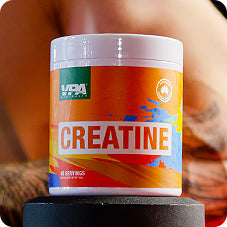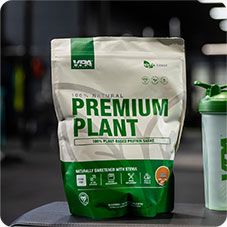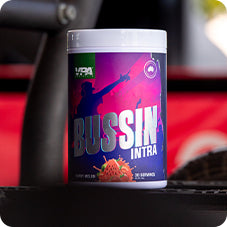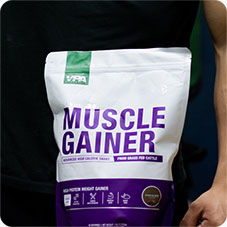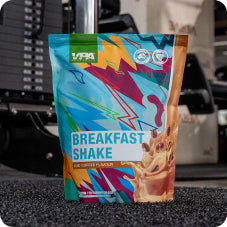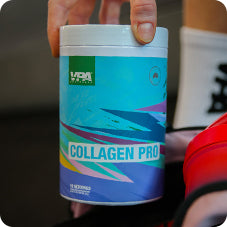- $0.00 AUD Subtotal
Running Cadence: The Key to Efficient Running and Injury Prevention
February 16, 2024 4 min read

Whether you're a novice runner or a seasoned marathoner, understanding your running cadence can play a pivotal role in enhancing your performance and preventing injuries. But what exactly is running cadence, and why is it so important?
The Basics of Running Cadence
Running cadence, also known as stride rate, refers to the number of steps you take per minute when running. Its importance cannot be overstated, as it not only affects your running efficiency but can also influence your susceptibility to injuries.
Determining Your Current Running Cadence
Measuring your running cadence is straightforward. You can count the number of times your right foot hits the ground in a minute and then double that figure. An understanding of your current steps per minute can provide valuable insights into your running efficiency and highlight areas where improvement is needed.
Role of Cadence in Running Efficiency
Studies have shown a link between a higher running cadence and an improved running economy. By taking more steps per minute, you may reduce ground contact time and vertical oscillation, potentially enhancing efficiency and reducing the risk of injury.
How can I Improve my Running Cadence?
In the world of running, it is crucial to remember that there is no "one size fits all" solution – the perfect cadence for one person may not work for another. Individual differences in height, weight, leg length and stride length all influence what cadence will work best for you. Although the widely suggested 180 steps per minute serves as a good reference point, it is not a strict rule.
If you're determined to work on increasing your running cadence, remember that this should be a gradual process. Suddenly increasing your steps per minute could lead to stress and strain on your muscles that are not accustomed to the change. So, how can you go about it? Start by aiming for a 5-10% increase in your current cadence, and once you're comfortable with that, consider another small increase.
Improving your running cadence requires consistent practice and the use of effective strategies. Drills are an excellent tool for improving running cadence and overall running efficiency. Here are some drills specifically designed to help increase your cadence:
- High Knees: Stand tall and start jogging slowly in place. Gradually increase the speed while lifting your knees as high as possible with each stride. Focus on quick turnover and maintaining a relaxed upper body.
- Butt Kicks: Similar to high knees, jog in place but this time focus on bringing your heels up towards your glutes with each stride. Aim for a quick and light movement, keeping your upper body relaxed.
Source: Greatist
- Quick Feet: Find a small area and perform quick, light steps in place as fast as you can while maintaining good form. This drill helps reinforce rapid foot turnover.
- Skipping:There are a variety of skip drillsto emphasise knee drive which can help to propel yourself forward. Skipping helps improve coordination and strengthens the muscles used in running.
- Single-Leg Hops: Stand on one leg and perform short hops forward, focusing on quick turnover and maintaining balance. Switch legs and repeat the drill. This helps strengthen stabilizing muscles and improves coordination.
Incorporate these drills into your warm-up routine or dedicate specific sessions to drill work. Start with a few repetitions of each drill and gradually increase the duration and intensity as you become more comfortable. Consistent practice and patience are key to improving your running cadence effectively.
Cadence and Foot Strike
It's also worth noting that a higher cadence generally promotes a mid-foot strike, which is often associated with less injury risk compared to a heel strike. This is because a mid-foot strike can more evenly distribute the impact forces of running, potentially protecting you from injury.
Source: Run Repeat
Forefoot Strike
Landing on the front portion of the foot (toes).
1. Used by sprinters, enables a runner to develop a lot of power and speed.
2. Used for distances up to 400 meters.
3. Emphasis on using the calf muscles to assist in springing the runner forward and results in extrra stess to calf muscles.
Important:
Inadequate exercise and training can lead to pain in the Achilles tendon and can cause shin splits.
Midfoot Strike
Landing on the middle portion of the foot.
1. A very efficient way to run.
2. Used for middle distances (600 meters) to long distances (25 miles).
3. Less braking forces introduced while running.
4. Moderate stress to calf muscles.
5. Beginners should gradually change to this running technique.
Other helpful tips:
Having a slight forward lean while running provides momentum.
Keep running fun by using the correct body mechanics.
Heel Strike
Landing on the heel of the foot.
1. A very inefficient way to run.
2. Should only be used for walking.
3. Introduces braking forces while running.
4. Extra stress applied to the back, ankle, knee, and hip joints.
5. Can eventually cause pain in these areas.
Bringing Music into The Mix
Music can be a fun and effective way to improve your cadence. Many runners find that running to songs with a certain BPM (beats per minute) like their desired cadence can help them intuitively increase their step rate. There are even specific playlists available on music streaming platforms that are designed for this purpose.
Role of Running Cadence in Preventing Injuries
Injuries like shin splints and runner's knee are common among runners, and evidence suggests that running cadence may play a role in the prevention of these running injuries particularly with its ability to:
- reduce ground reaction forces
- improve running form
- balance muscle engagement
- optimise joint loading
- improve running economy
Running Cadence & Speed
There's a direct relationship between your running cadence and your speed. By adjusting your steps per minute, you can manipulate your pace without necessarily changing your stride length. This can be a useful tool in controlling your speed in various racing scenarios.
Wrapping up
In conclusion, mastering your running cadence can be a game-changer in enhancing your performance and preventing injuries. It's about understanding your current cadence, recognising the potential benefits of increasing your steps per minute, and then utilising effective strategies and tools to make those adjustments. Happy running!
Also in Training

Boosting Your Health: Understanding Aerobic and Anaerobic Metabolism
July 22, 2024 4 min read

Smash Through the Wall: How to Increase Your Lactate Threshold for Running Glory
July 08, 2024 4 min read

The Ultimate Guide to Cross-Training
July 01, 2024 5 min read
Recent Articles
- Boosting Your Health: Understanding Aerobic and Anaerobic Metabolism
- Smash Through the Wall: How to Increase Your Lactate Threshold for Running Glory
- The Ultimate Guide to Cross-Training
- Embrace the Cold: How to Stay Active and Healthy Throughout Winter Down Under
- What is Hyrox?
- Mastering the Pull-Up
- Building a Champion: Why Cardio and Strength Training are Your Fitness Dream Team
- Beyond the Six-Pack: Building a Strong Core for Everyday Life
- Routine and Discipline – The Backbone of Fitness
- Calisthenics for Beginners


